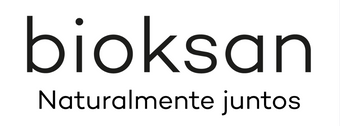Do sport is synonymous with welfare, because its benefits for our health have been widely supported by the science in a multitude of investigations. However, whatever sport you practice, it is necessary that you incorporate a series of previous routines to yours training so that they are safe with your joints, since if you skip the heating you could suffer injuries.
In Bioksan we show you How you can prepare your joints to avoid injuries depending on the sport you practice.
Running
If you are a runner passionate, you should know which parts of your body are at greatest risk of injury every time you run a race. The hardness of the terrain you cover is key to not subjecting your bikes to too much stress. joints, and in this case the knees are the ones that do the most work.
That doesn't mean that running is bad for your knees, unless you suffer from a condition such as osteoarthritis, but you have to be technique to run adequate and, of course, warm the knees and ankles before starting each march. Try to do circular twists with ankles and knees and make a few squats in your activation!
It is also recommended stretch the hamstrings, crossing the legs and lowering the trunk trying to touch the insteps while keeping the legs without bending.
Soccer
Soccer involves changes of pace and direction, physical contact and kicking the ball with the feet. A challenge for the joints of the lower body.
Soccer players must do a thorough warm-up hips, knees and ankles, through exercises like push-ups and extensions, circle waist movements, forward and backward, carry the knees to chest, lateral lunges, jumps…

Tennis and other racket sports
Tennis is a very complete sport and really demanding on the joints of both the upper and lower body.
A proper warm-up in tennis would begin with a few minutes of jogging, to increase the temperature of the joints. Then, continuing with the lower body, it is usually done skipping (knees up while moving forward), jumps, side steps and the classic squats.
And let's not forget the warm-up! upper body with racket! The shoulders, elbows and wrists They are very delicate joints in tennis, so their activation must be taken very seriously.
For example, the simplest exercises are bounce the ball against the ground and do touches with the ball, and incorporate wrist twists in all directions, swingers or arm swings. And once you notice that you have warmed up, you can gradually incorporate rallies, volleys, serves, etc.
Swimming
The movements we use when swimming involve all parts of the body, and although swimming is a low-impact sport for the joints, injuries to the joints can occur. neck, back, knees…
To reduce the likelihood of suffering from them, simply follow a proper warm-up routine. First of all, execute movements with the neck of up and down (as if you were nodding) and to the sides (denying). Then put on the hand on forehead and hold it steady while you try push her back with your head, but without overcoming the resistance.
To prepare the back, the best are stretching. For example, you can place the arms By etop of the head and put a hand in the back, pressing with the other hand the elbow down.
Another possibility is that turn your trunk to both sides looking backwards, while staying upright.
For the arms, it is recommended to perform circumduction movements with arms extended and push-ups and extensions of elbows.
And for him lower body, test elevations alternating both legs and hip circumductions.

Take care of your joints with your diet too!
“You are what you eat", they often repeat to us from childhood to convince us of the benefits of wearing a diet varied. This is an expression as accurate as the recommendation to consume more calcium, phosphorus, magnesium, silicon and sulfur to take care of your joints.
For this reason, it is essential to incorporate foods rich in these nutrients into our diet, such as:
-
Nuts: Sunflower seeds, cashews, almonds, peanuts and many other nuts are rich in magnesium, which has the ability to reduce joint inflammation.
-
Green leafy vegetables: They are also a rich source of magnesium and silicon, which promotes the formation of articular cartilage.
-
Legumes: Rich in calcium, which is essential for strong bones, as well as iron and magnesium.
-
Vegetables: Rich in sulfur, which is involved in the formation of collagen to keep connective tissue healthy: cartilage, tendons, muscles...
-
Dairy: For its contribution in calcium and phosphorus.
- But you still have another option to take care of your joints naturally: taking a dietary supplement as Artiok, which forms a support matrix for organs and tissues, and improves the firmness, elasticity and integrity of structures such as tendons, joints and ligaments.
Its formula contains type II collagen (UC-II)® not denatured, whose ability to improve joint mobility has been demonstrated by multiple studies. And it also includes hyaluronic acid, naturally present in our joints, in addition to magnesium, which reduces fatigue and contributes to the correct functioning of the musculoskeletal system.
The turmeric and the boswellia, traditionally used to relieve inflammation, are also other components.
In Bioksan We are specialists in caring for people natural, and that is why we want to help you get rid of your joint problems.
Our success is making you feel good!
February 20, 2024
—
Ciro Oliva de la Nuez



















